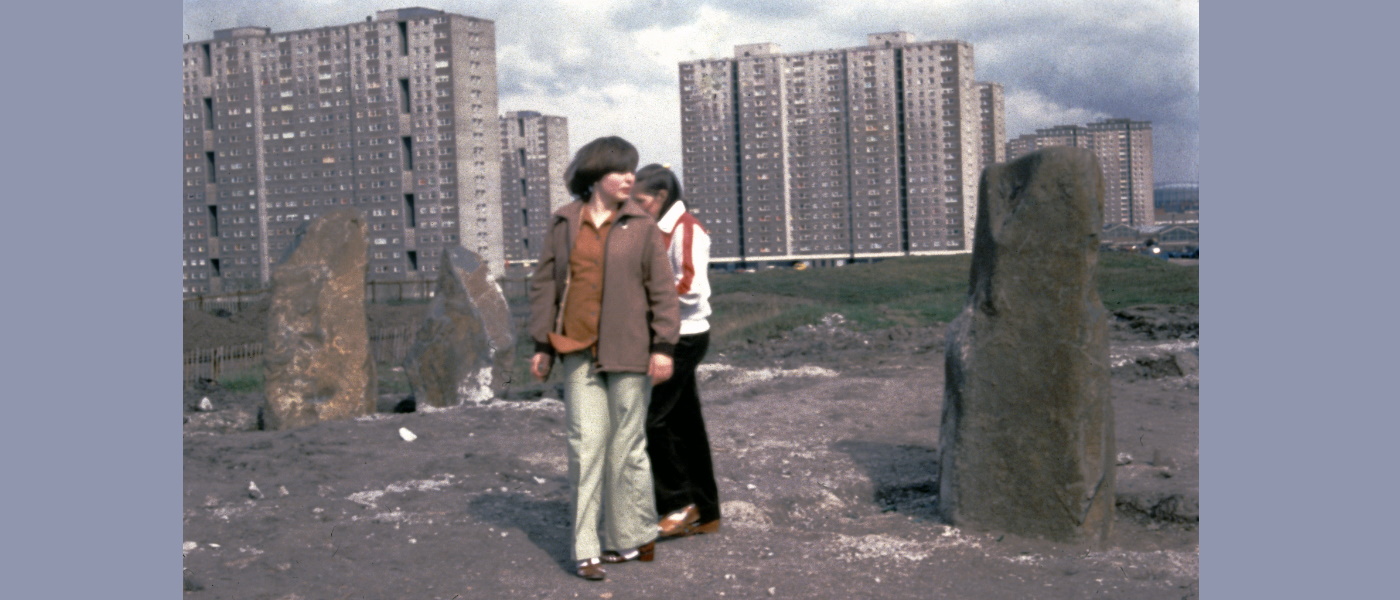Vertical living (early 1980s)

Urban prehistory creates juxtapositions and this image is perhaps one of the most powerful examples you will ever see. It takes a while for any of it to make sense – this is not where one expects to see standing stones. The stone circle here is freshly constructed, only a few days old, with no grass or landscaping as of yet, and the young people in the photograph appear to be sizing up their new neighbours. There is a dynamic quality to this image that is to some extent diminished by the already tired-looking high rise blocks in the background, their greyness almost overwhelming. The vertical brown-grey standing stones echo the tower blocks, reaching to the sky, the sum of their parts, a stone community, rich with meaning and secrets if only they could be told. There were other similarities: each tower block was “turned to the same angle to catch any morning and evening sun” (Barnabas Calder in Leslie’s Disappearing Glasgow book), urban sunchasers. Sadly, due to cuts in funding for the job creation scheme, aside from some landscaping and tidying up from time to time, no user information would be included with the monument. Instructions of how to place one’s body to witness solstices or constellations rising and falling on the Glasgow urban skyline were not made clear, and so potential users were in the dark, even during daylight hours, batteries not included. The Sighthill stone circle in this incarnation was in many ways a missed opportunity: Lunan’s aspiration for this to be a way to help Glaswegians understand the rudiments of astronomy would never quite materialise. Yet what the stone circle did was connect Sighthill to a more ancient past, and allow dreams of a better future to emerge; after all where else in Glasgow – in Scotland, in Britain even – was any of this possible?

